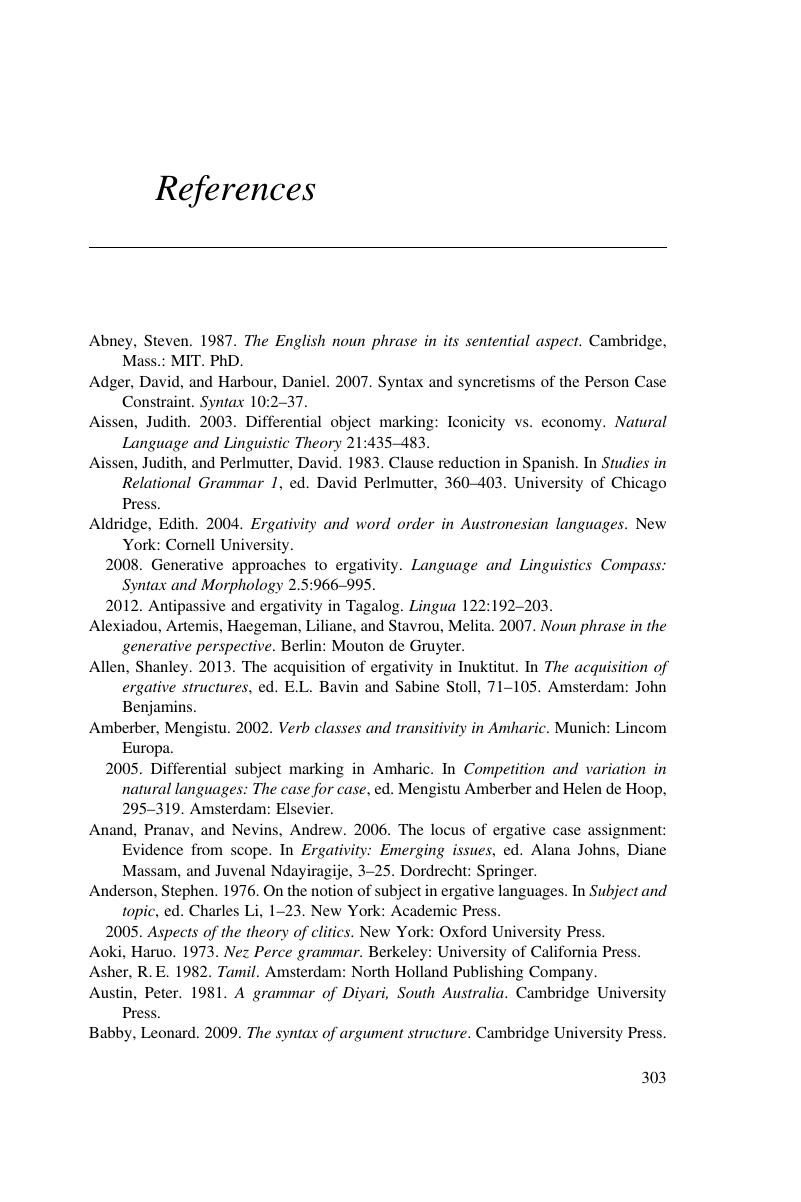Book contents
- Frontmatter
- Contents
- Acknowledgements
- Abbreviations and conventions
- Map of principal languages investigated and their case systems
- 1 The issue of structural case
- 2 The variable relationship of case and agreement
- 3 C-command factors in case assignment
- 4 Domains of dependent case assignment
- 5 Categories involved in case interactions
- 6 On the timing of case assignment
- 7 Conclusion: Putting together the big picture
- References
- Index
- References
References
Published online by Cambridge University Press: 05 August 2015
- Frontmatter
- Contents
- Acknowledgements
- Abbreviations and conventions
- Map of principal languages investigated and their case systems
- 1 The issue of structural case
- 2 The variable relationship of case and agreement
- 3 C-command factors in case assignment
- 4 Domains of dependent case assignment
- 5 Categories involved in case interactions
- 6 On the timing of case assignment
- 7 Conclusion: Putting together the big picture
- References
- Index
- References
Summary

Information
- Type
- Chapter
- Information
- CaseIts Principles and its Parameters, pp. 303 - 316Publisher: Cambridge University PressPrint publication year: 2015
